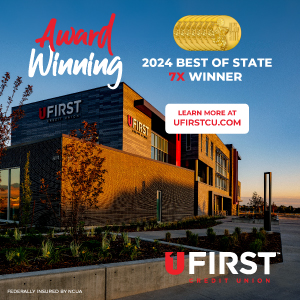Contrary to popular perception, it’s possible to be socially and environmentally conscientious and still turn a significant profit for investors. University of Utah students at the Sorenson Impact Center are proving just that.
Contrary to popular perception, it’s possible to be socially and environmentally conscientious and still turn a significant profit for investors. University of Utah students at the Sorenson Impact Center are proving just that.
Founded in 2013 by local entrepreneur, philanthropist and investor James Lee Sorenson, the Sorenson Impact Center (SIC) provides a hands-on education to its students as it affords them the opportunity to act as management consultants and investment bankers to high-level investors in order to promote global impact investing. The project was previously known as the James Lee Sorenson Center for Global Impact Investing.
Global impact investing is defined as infusing capital into investment funds, companies and organizations that are making social and environmental impacts while still maintaining the intention of making a return on the investment.
“Much of what we do is investing into the pioneering gap [with] early-stage companies, both here in the U.S. and around the world, who, rather than try and figure out the next Uber or Facebook — which are incredibly successful investments — they’re picking companies that are solving really tough social or environmental problems,” said Patrick Mullen, executive director at the center.
In a collaborative effort, students from Brigham Young University serve internships at the Sorenson Impact Center.
The portfolio investment manager at SIC, Caleb Jones, said that the center has worked on over $100 million in transactions across several continents. Some of the notable successes that Jones cited include the Graduation Alliance, a Salt Lake City education company that works with high school dropouts and provides them the services needed to assist them in obtaining their high school diploma; BRCK, a technology hardware solution expanding the benefits of Internet connectivity and e-learning to peri-urban and rural East Africa; and Kinara Capital, a small business lender in India that fosters economic growth and job creation.
Jones also pointed to Simpa Networks, a pay-as-you-go solar home unit provider to peri-urban and rural Indians; and Rimidi Diabetes, a U.S.-based diabetes management platform through smart analytics and predictive algorithms that is increasing wellness and health outcomes for those suffering from diabetes.
SIC measures the success of its business collaborations based on factors that include both the scale of the global impact and the financial return, according to Jones. “Success is measured by supporting scalable, sustainable solutions to social or environmental problems through business ventures. Our portfolio continues to succeed both in raising additional capital from investors, scaling impact and growing revenue. Impact measurement is customized to the individual investment opportunity.”
Jones points to some of the favorable outcomes achieved at SIC, which include an increased income by an annual $2.2 million across more than 30,000 jobs where income is less than $2 per day, increased access to financial services and financial education for more than 11,000 people, the facilitation of $16.9 million in investments or lending for people who were previously without access to capital, high school diplomas for 150 at-risk dropouts, access for than 15 million teachers and students to free supplemental content for improved learning outcomes and access to electricity for 65,800 people in India.
“For us, we’re pretty deliberate when thinking about what are the outputs and outcomes we want to see, and by output, that would mean, specifically, we want to get someone a high school diploma or we want to get someone a loan who needs to access capital or we want to get someone access to affordable housing, but even further, tracking outcome,” said Mullen. “What happens to that individual because they have a diploma? Or, what happens to that individual because they got this loan? Or, what happens to that individual because they have access to affordable housing? So it really depends on the business, but I think the correspondent of how we measure success is looking at that output vs. outcome type of mentality.”
Students that participate in the SIC program come from all over campus, said Mullen. That includes business school, public policy school, engineering school and others and range from undergraduate students to Ph.D. candidates.
The program is demanding, according to Mullen. “We implemented our own Wall Street-type training program. We know the students come in really fresh, but do expect a lot as far as time spent and engagement. Most students end up working 20 hours per week at the center,” he said.
Mullen is very proud that there has been 100 percent job placement for students coming out of the SIC program, which he says is much higher than their peers at local universities. In fact, the students are even standing out among Ivy League schools.
In a recent MBA competition called MIINT (MBA Impact Investing Network & Training) at the Wharton School of Business in Philadelphia, SIC was the only program that brought undergraduate students to compete against MBA students from schools such as Yale, Duke and the University of Chicago.
After one of the undergraduates from SIC gave his presentation, he was approached by a recruiter from the Heron Foundation and told that his presentation was the best she’d ever seen and offered him a job as an associate at an MBA level. He remarked that he didn’t have an MBA and, baffled, she said, “I don’t care, I’m still going to hire you.” According to Mullen, his student did accept the job of his dreams at 20 years of age and now lives New York City.
Such is the history of a very successful program.








